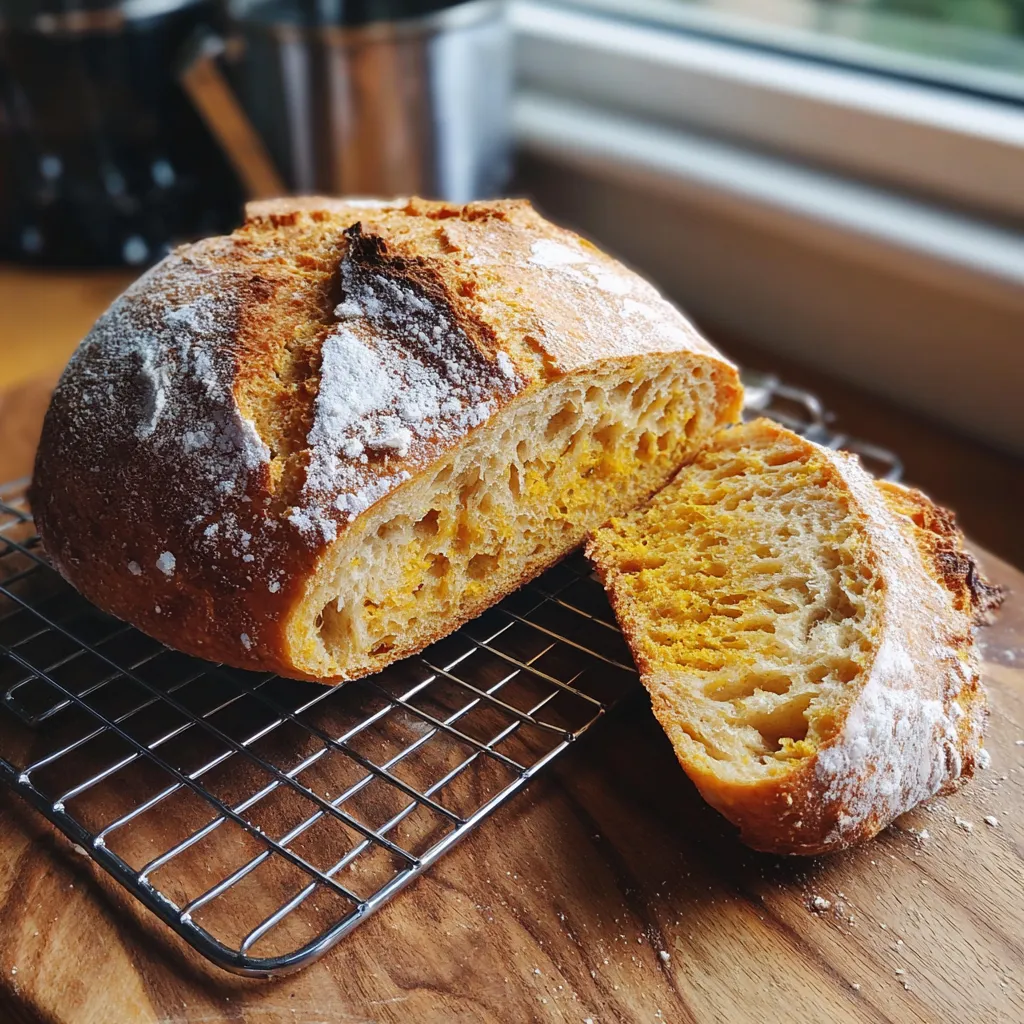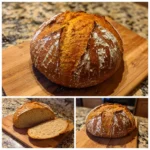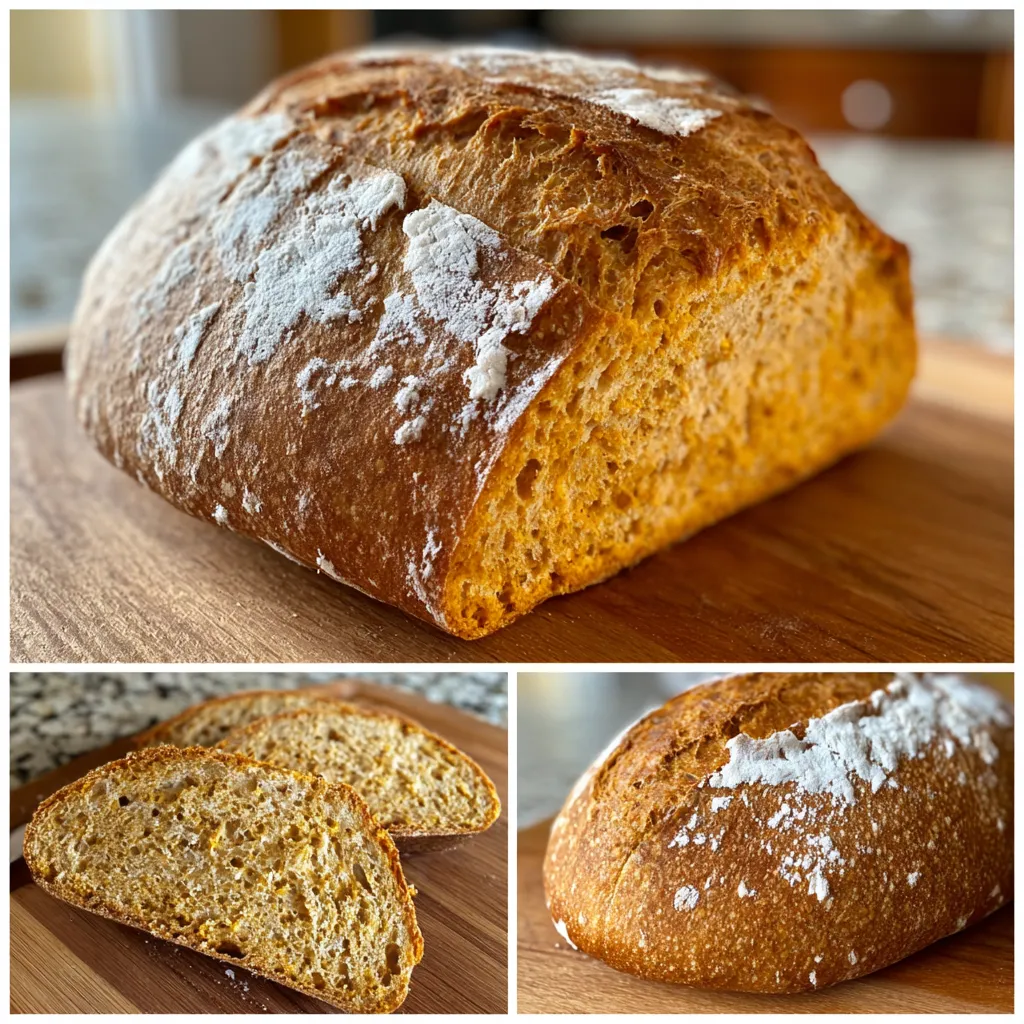There is something incredibly special about the smell of bread baking in the oven, especially when it’s a loaf of homemade pumpkin sourdough bread. This recipe combines the tangy depth of a mature sourdough starter with the warm, earthy sweetness of pumpkin puree. The result is a stunningly beautiful, flavorful loaf of pumpkin sourdough bread with a soft, moist crumb and a perfectly crisp crust. We will walk through every step, from preparing your levain to scoring and baking, ensuring you feel confident in creating this autumn masterpiece of pumpkin sourdough bread in your own kitchen.
I’m so glad you’re here. I’m the cook, food lover, and everyday kitchen experimenter behind this blog. Bestdisheasy.com is my little corner of the internet where I share the joy of creating simple, delicious recipes that bring comfort and smiles to your table. Cooking didn’t always come naturally to me. It became a passion over time—something that grew as I started feeding my family and realizing how much food connects us. What started as a necessity became my favorite way to unwind, get creative, and show love.
Table of Contents
Table of Contents
Gathering Your Ingredients for Pumpkin Sourdough Success
Creating an exceptional loaf of pumpkin sourdough bread starts with quality ingredients. Each component plays a crucial role in the flavor, texture, and rise of your final loaf. Using the right flour, a vibrant starter, and pure pumpkin puree makes all the difference.
Choosing Your Flour Blend
The foundation of any great bread is its flour. For this pumpkin sourdough recipe, a blend of bread flour and whole wheat flour works beautifully. The bread flour provides the high gluten content necessary for a strong, airy structure and a chewy crumb. The whole wheat flour introduces a nutty depth that complements the pumpkin perfectly. If you want to experiment with other grains, consider substituting a small portion with rye flour for an even more complex flavor profile, much like you would in a classic rye sourdough.
The Role of Pumpkin and Spices
Pure pumpkin puree is the star here, contributing both flavor and moisture. It is vital to use pure pumpkin puree, not pumpkin pie filling, which contains sugar and spices that can throw off your recipe. The natural sugars in the pumpkin caramelize during baking, giving the crust a beautiful color and a subtle sweetness. While this recipe focuses on the pure flavor of pumpkin, a hint of warming spices like cinnamon or nutmeg can be a delightful addition, echoing the cozy notes found in our favorite pumpkin recipes.


Easy Homemade Pumpkin Sourdough Bread Recipe Perfect Loaf
- Total Time: 18 hours
- Yield: 1 loaf
Description
Master the perfect loaf with our easy homemade pumpkin sourdough bread recipe Stepbystep guide for baking moist spiced sourdough with a crisp crust
Ingredients
Instructions
- Prep Time: 45 minutes
- Cook Time: 45 minutes
- Category: Bread
- Cuisine: American
Nutrition
- Calories: 180 calories
- Sugar: 2 grams
- Fat: 1 gram
- Carbohydrates: 36 grams
- Fiber: 3 grams
- Protein: 6 grams
Preparing Your Sourdough Starter and Levain
An active, healthy sourdough starter is the heart of this bread. Before you begin mixing your dough, you need to ensure your starter is peaking and ready to leaven your homemade pumpkin sourdough bread effectively. This requires a bit of planning ahead.
Building a Strong Levain
About 8-12 hours before you plan to mix your dough, you will build your levain. This is a small offshoot of your main starter that you will use specifically for this bake. Combine a small amount of your ripe starter with fresh flour and water. This process wakes up the yeast and bacteria, ensuring they are at peak activity when you add them to your final dough mixture. A bubbly, fragrant levain that has doubled in volume is your sign that it’s ready to go.
Importance of Starter Activity
The activity of your starter directly influences the rise of your bread. A weak starter will result in a dense loaf. To test if your starter is ready, do the float test. Drop a small spoonful of your levain into a glass of water. If it floats, it’s filled with enough gas and is ready to use. This careful attention to your starter’s health is just as important as it is for maintaining a robust sourdough starter for all your baking projects.
Mixing, Kneading, and Bulk Fermentation
This stage is where the magic begins to happen. Combining your ingredients and developing the gluten structure through kneading sets the stage for a beautiful open crumb. The bulk fermentation, or first rise, is a critical period where the dough develops its flavor and strength.
Combining Ingredients Autolyse
Many bakers start with an autolyse, a resting period for the flour and water. For this pumpkin sourdough, combine the bread flour, whole wheat flour, and water (hold back the salt and levain) and mix until no dry bits remain. Let this rest for 30-60 minutes. This allows the flour to fully hydrate, making the gluten network easier to develop and resulting in a better texture and higher rise. After the autolyse, you can then incorporate the levain, pumpkin puree, and salt.
Mastering the Bulk Ferment
After mixing in all ingredients, you will begin the bulk fermentation. This is not just a waiting period; it’s an active phase for the dough. During this time, you will perform a series of stretch and folds every 30 minutes for the first 2 hours. This technique gently builds strength in the dough without aggressive kneading. You will know bulk fermentation is complete when the dough has increased in volume by about 30-50%, appears smooth and aerated, and holds a slight dome shape. The duration can vary greatly depending on your kitchen’s temperature, so watch the dough, not the clock.
Shaping, Proofing, and Baking the Perfect Loaf
The final steps before baking are all about guiding your dough into its final form and allowing it one last rise. Proper shaping creates surface tension, which helps the bread hold its shape and spring up dramatically in the oven.
Shaping with Confidence
Turn your risen dough out onto a lightly floured surface. Gently press it into a rectangle without degassing it completely. Then, fold it into a tight boule (round) or batard (oval) shape. The goal is to create a smooth, taut surface on the outside of the loaf. This outer “skin” will help contain the gas produced during the final proof and oven spring. If you prefer a different shape, the techniques are similar to those used when crafting a hearty whole wheat sourdough loaf.
The Final Proof and Baking
Place your shaped loaf into a banneton or proofing basket, seam-side up. Cover it and let it proof for its final rise. You can either leave it at room temperature for a few hours or refrigerate it overnight for a more pronounced sour flavor.
When you’re ready to bake, preheat your Dutch oven or baking vessel to 450°F (230°C). Turn your dough out onto parchment paper and score it deeply with a sharp lame or knife to control expansion. Bake the bread covered for the first 20 minutes, then uncover it and bake until the crust is golden and the bread sounds hollow when tapped.

Frequently Asked Questions
Can I use canned pumpkin puree for pumpkin sourdough bread?
Absolutely. Canned pure pumpkin puree (not pumpkin pie filling) works perfectly well and offers consistent results. Just ensure you drain any excess liquid from the can if it seems particularly watery to maintain the correct dough hydration.
Why did my pumpkin sourdough bread turn out dense?
A dense loaf is often the result of an inactive starter, under-proofing, or over-proofing. Ensure your levain passes the float test. During bulk fermentation, look for a 30-50% increase in volume. An overnight cold proof often yields a better rise and more open crumb.
How do I store homemade sourdough bread to keep it fresh?
For the best crust, store your cooled bread in a paper bag or loosely wrapped in a tea towel for the first day. For longer storage, keep it in a plastic bag or airtight container at room temperature for up to 3 days. For extended storage, slice and freeze the loaf for up to 3 months.
Can I add nuts or seeds to this recipe?
Yes, additions like toasted pecans, walnuts, or pumpkin seeds are fantastic. Fold in up to a cup of your chosen add-ins during the final few minutes of mixing, after the dough has come together, to avoid overworking the gluten.
